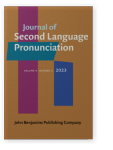Vol. 9:3 (2023) ► pp.362–383
Dialect-specificity and learners’ L2 perceptual resilience after study abroad
The present study examined the perception of two regional variants of Spanish (theta /Ɵ/ and zheísmo/sheísmo [ʒ, ʃ]) by nonnative speakers of Spanish with and without study abroad experience. The study’s goals were to determine whether learners who study abroad accept regional variants more frequently than at-home learners, and whether this effect is limited to cues participants are exposed to while abroad. Participants were L1 English speakers asked to determine whether they considered real and nonce word pairs with matching and mismatching regional variants to be instances of the same word. The findings reveal higher acceptance rates of mismatching variants by L2 learners who had studied abroad than of classroom learners but results for specific location of study abroad that suggest learners likely build perceptual resilience while abroad that goes beyond the specific cues they are exposed to.
Article outline
- 1.Introduction
- 2.Previous Literature
- 3.Method
- 3.1Participants
- 3.2Stimuli and procedure
- 3.3Data analysis
- 4.Results
- 5.Discussion
- 5.1Perception of matching or mismatching dyads and regional cues without exposure
- 5.2Effects of study abroad experience
- 6.Conclusion
-
References
